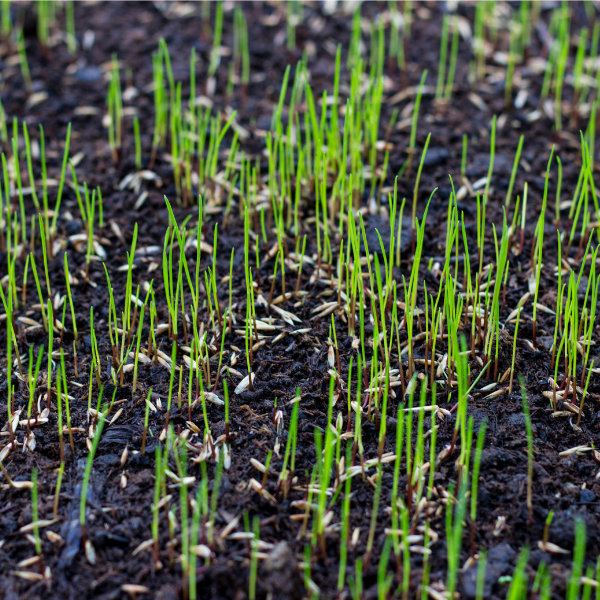How To Grow Grass Seed

Sowing:
Broadcast the grass seed evenly over the prepared soil surface using a spreader or by hand. Pay attention to recommended seeding rates to achieve optimal coverage.
Coverage:
Lightly rake the soil to cover the seeds with a thin layer of soil, ensuring good seed-to-soil contact for germination.
Watering:
Keep the seeded area consistently moist to promote germination and establishment. Water lightly and frequently, avoiding pooling or runoff.
Maintenance:
As the grass seedlings emerge, gradually reduce watering frequency while monitoring growth. Once established, mow the lawn regularly to maintain an even height and promote healthy growth.
By following these steps, you can successfully sow grass seed and cultivate a thriving lawn, enhancing the beauty and functionality of your garden space.

How to sow grass seed
Planting grass seed is an affordable method to establish a lush lawn, which serves as a vital component in garden design, providing a harmonious backdrop to vibrant blooms and diverse plantings. Regardless of garden size, a verdant lawn ties together various elements, offering visual cohesion.
To sow grass seed and initiate lawn growth, follow these steps:
Assessment:
Evaluate the area intended for the lawn to determine soil quality, sunlight exposure, and potential usage patterns. Consider the desired purpose of the lawn, whether for recreation or aesthetic appeal.
Preparation:
Prepare the soil by removing debris, weeds, and rocks. Level the surface to ensure even seed distribution and uniform growth.
Selection:
Choose appropriate grass seed varieties based on factors such as climate, soil type, and desired appearance. Consider whether the lawn will be subject to heavy foot traffic or shaded conditions.

Planning Your Lawn
To ensure successful grass seed sowing, it's best to do so during spring (March to May) or early autumn (September to mid-October) when the soil is warm and moist.
Before embarking on laying a new lawn, take some time to strategically plan its placement within your garden layout. Consider foot traffic patterns and potential obstacles that may hinder mowing.
Anticipate areas prone to heavy wear and tear, such as pathways, shortcuts, or children’s play zones, during the planning phase. If necessary, integrate stepping stones into the lawn and designate specific areas for children’s play equipment, preferably on a bed of natural play bark.
For more of our latest blogs, see below:

 2,768 REVIEWS
2,768 REVIEWS










